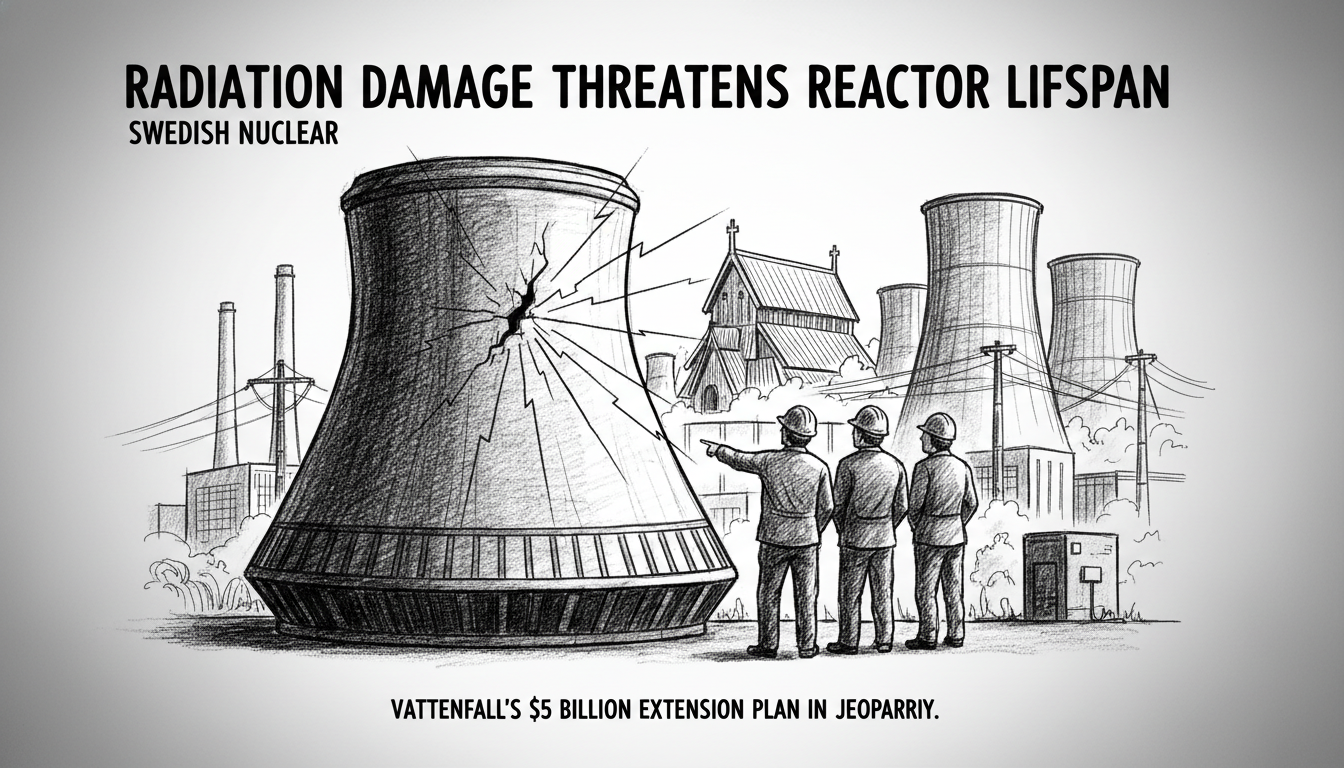Sweden's state-owned energy company Vattenfall aims to extend operations at its five nuclear reactors by 20 years beyond their current lifespan. This would push their operation to around 2060. However, one reactor faces a unique challenge that could end its service early.
Ringhals 3 has radiation damage in a weld on its reactor tank. The reactor tank itself cannot be replaced. This might force the unit to retire without getting the planned extension.
Monika Adsten, research manager at Forsmark and Ringhals, described the situation. "Ringhals 3 hangs a bit loose," she said. Vattenfall acknowledges the risk is extremely small but refuses to leave anything to chance.
Sweden plans not only to build new nuclear power but also to extend the life of existing reactors. Otherwise, the country risks losing substantial electricity production in the early 2040s.
Vattenfall will decide within a few years whether to extend all five reactors. The company is conducting a second detailed study to identify components needing replacement.
The investment cost totals approximately 50 billion Swedish kronor. That equals about 10 billion per reactor for 20 additional years of electricity production. This extension would yield 800 TWh total, roughly six times Sweden's annual electricity consumption.
Vattenfall's management sees no major technical obstacles. The company considers the internal conditions good for extension.
Jan Greisz, head of facility development for Nordic power generation at Vattenfall, highlighted another factor. "A big part of the equation is the demand side," he stated. The company cannot control electricity demand or pricing. If Sweden's electrification doesn't accelerate, the investment becomes harder to justify.
This isn't the first extension for Swedish reactors. They previously received extensions from 40 to 60 years. A lifespan extension involves replacing many components but not the concrete building or reactor tank.
Are older designs less safe over time? Jerry Westerstedt, CEO of Forsmark, addressed safety concerns. "They are robust in terms of radiation safety," he said. "This means no increased risk."
Could reactors operate for 100 years? Westerstedt said that's difficult to predict.
No final investment decision about the 20-year extension is expected by 2026/2027. Decisions will be made continuously, but planning must ensure the right conditions exist.
Monika Adsten identified another challenge. "The supplier side risks becoming a bottleneck," she warned.
Sweden isn't alone in wanting to extend existing nuclear reactors' lifespans. Many countries also plan to build new reactors. As nuclear power gains popularity, the competition for skilled workers intensifies.
Sweden currently operates six nuclear reactors. Three are in Forsmark, two in Ringhals, and one in Oskarshamn. All began operation in the first half of the 1980s.
Vattenfall owns the five reactors at Forsmark and Ringhals. The company and its co-owners have a directional decision to extend operations by 20 years. The owner of Oskarshamn's remaining reactor shares the same goal.
The situation reveals the practical challenges of nuclear lifetime extensions. Even with strong technical foundations, individual units can face unique obstacles that threaten long-term plans.
